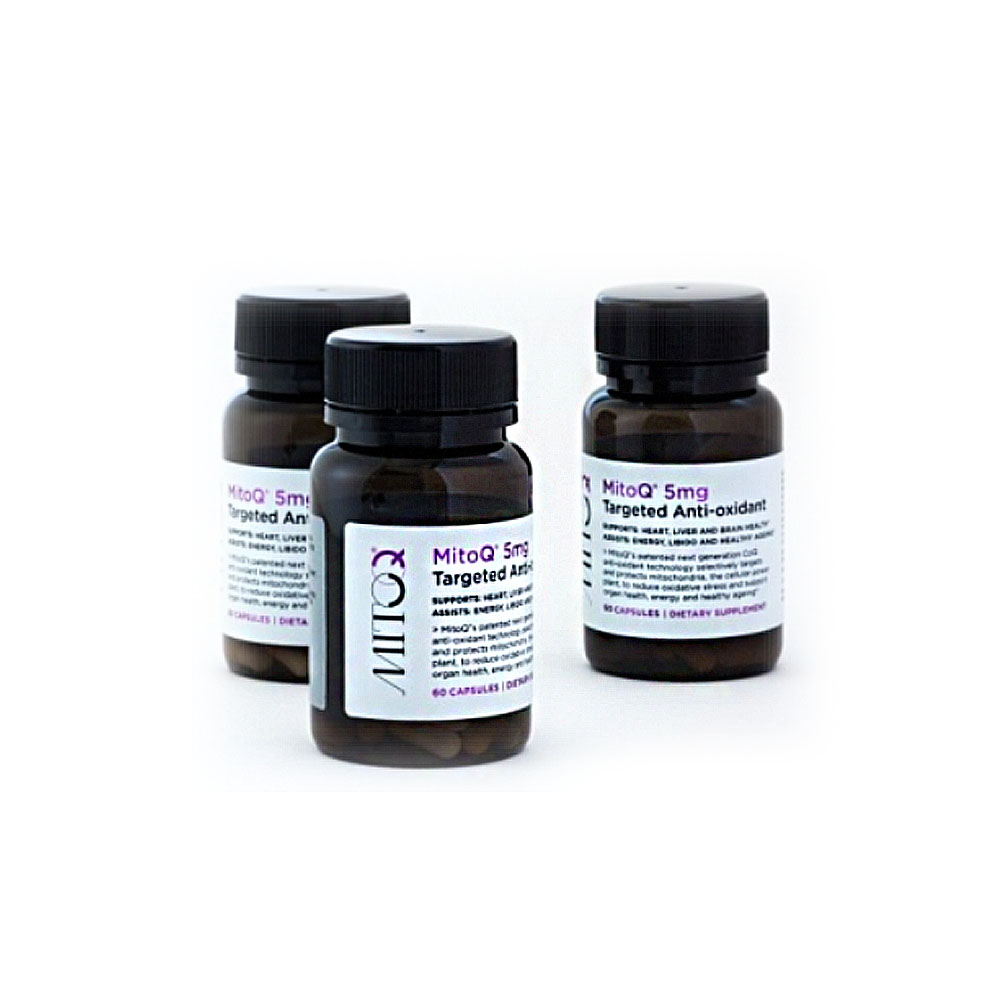Uncategorized
Mitoq Novel
Older adults who take a novel antioxidant that specifically targets cellular powerhouses, or mitochondria, see age-related vascular changes reverse by the equivalent of 15 to 20 years within six weeks, according to new University of Colorado Boulder research.
The study, published this week in the American Heart Association journal Hypertension, adds to a growing body of evidence suggesting pharmaceutical-grade nutritional supplements, or nutraceuticals, could play an important role in preventing heart disease-the nation’s No. 1 killer. It also resurrects the notion that oral antioxidants, which have been broadly dismissed as ineffective in recent years, could reap measurable health benefits if properly targeted, the authors say.
“This is the first clinical trial to assess the impact of a mitochondrial-specific antioxidant on vascular function in humans,” said lead author Matthew Rossman, a postdoctoral researcher in the department of integrative physiology. “It suggests that therapies like this may hold real promise for reducing the risk of age-related cardiovascular disease.”
For the study, Rossman and senior author Doug Seals, director of the Integrative Physiology of Aging Laboratory, recruited 20 healthy men and women age 60 to 79 from the Boulder area.
Half took 20 milligrams per day of a supplement called MitoQ, made by chemically altering the naturally-occurring antioxidant Coenzyme Q10 to make it cling to mitochondria inside cells.
The other half took a placebo.
After six weeks, researchers assessed how well the lining of blood vessels, or the endothelium, functioned, by measuring how much subjects’ arteries dilated with increased blood flow.
Then, after a two-week “wash out” period of taking nothing, the two groups switched, with the placebo group taking the supplement, and vice versa. The tests were repeated.
The researchers found that when taking the supplement, dilation of subjects’ arteries improved by 42 percent, making their blood vessels, at least by that measure, look like those of someone 15 to 20 years younger. An improvement of that magnitude, if sustained, is associated with about a 13 percent reduction in heart disease, Rossman said. The study also showed that the improvement in dilation was due to a reduction in oxidative stress.
In participants who, under placebo conditions, had stiffer arteries, supplementation was associated with reduced stiffness.
Blood vessels grow stiff with age largely as a result of oxidative stress, the excess production of metabolic byproducts called free radicals which can damage the endothelium and impair its function. During youth, bodies produce enough antioxidants to quench those free radicals. But with age, the balance tips, as mitochondria and other cellular processes produce excess free radicals and the body’s antioxidant defenses can’t keep up, Rossman said.
Oral antioxidant supplements like vitamin C and vitamin E fell out of favor after studies showed them to be ineffective.
“This study breathes new life into the discredited theory that supplementing the diet with antioxidants can improve health,” said Seals. “It suggests that targeting a specific source-mitochondria-may be a better way to reduce oxidative stress and improve cardiovascular health with aging.”
Explore further: Novel antioxidant makes old arteries seem young again, study finds
More information: Matthew J. Rossman et al, Chronic Supplementation With a Mitochondrial Antioxidant (MitoQ) Improves Vascular Function in Healthy Older Adults, Hypertension (2018). DOI: 10.1161/HYPERTENSIONAHA.117.10787
Journal reference: Hypertension
Provided by: University of Colorado at Boulder
MitoQ Study Links on Vascular Health Improvements:
Aortic Stiffening http://jap.physiology.org/content/early/2017/10/23/japplphysiol.00670.2017
Cardiac hypertrophy http://hyper.ahajournals.org/content/54/2/322.long
Cardiac ischaemia reperfusion injury http://www.ncbi.nlm.nih.gov/pubmed/15985532
Cardiovascular dysfunction http://www.ncbi.nlm.nih.gov/pmc/articles/PMC3914904/
Cereberal arterial function https://www.ncbi.nlm.nih.gov/pmc/articles/PMC3702596/
Cocaine-induced cardiac dysfunction http://www.ncbi.nlm.nih.gov/pubmed/20566328
Coronary artery disease https://www.ncbi.nlm.nih.gov/pmc/articles/PMC3903000/
Doxorubicin-induced cardiac toxicity https://www.ncbi.nlm.nih.gov/pmc/articles/PMC2717244/
Endothelial function http://www.the-aps.org/mm/Conferences/APS-Conferences/2017-Conferences/CV-Aging/Schedule/Program-of-Symposia.PDF
Haemorrhage http://www.ncbi.nlm.nih.gov/pubmed/25710429
Hypertension http://www.ncbi.nlm.nih.gov/pubmed/24304655
Ischaemic heart disease https://www.ncbi.nlm.nih.gov/pmc/articles/PMC4013346/
MitoQ Study Links for Oncology:
Breast cancer https://www.ncbi.nlm.nih.gov/pmc/articles/PMC4039229/
https://www.ncbi.nlm.nih.gov/pmc/articles/PMC3700358/
https://www.ncbi.nlm.nih.gov/pmc/articles/PMC2966059/
Cancer radiotherapy damage http://www.ncbi.nlm.nih.gov/pubmed/23804302
Liver cancer https://www.ncbi.nlm.nih.gov/pubmed/28121478
https://www.ncbi.nlm.nih.gov/pubmed/28898446
Lung & breast cancer http://journals.plos.org/plosone/article?id=10.1371/journal.pone.0168283
Malignant melanoma https://www.ncbi.nlm.nih.gov/pubmed/27786591
Myelodysplastic syndrome https://www.ncbi.nlm.nih.gov/pmc/articles/PMC4382457/
Neuroblastoma https://www.ncbi.nlm.nih.gov/pmc/articles/PMC3224534/

 Español
Español

